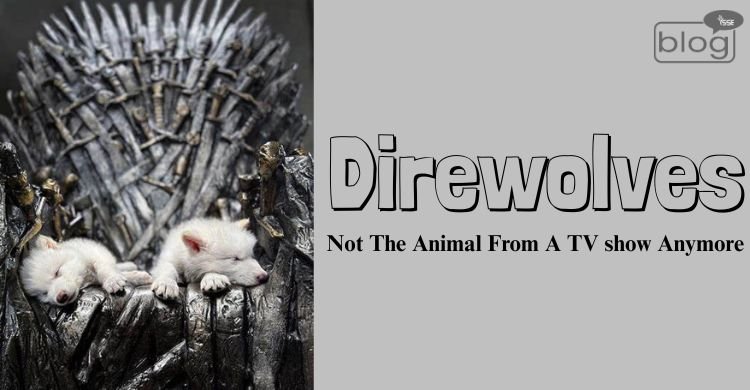If you have watched the famous TV show Game of Thrones, you’re familiar with the concept of direwolves. Six large, light-furred, loyal wolves followed around the Stark family and protected them from harm. The sad thing was that these animals didn’t exist in real life. Around 1200-1300 years ago, these animals that used to roam North America vanished from the face of the Earth. Recently, some scientists found a way to bring them back to life. So the question is, did the mystical animals from the TV show really come back?
Who brought back direwolves?
A private company named Colossal claimed that de-extincted the direwolves this year. This claim means this would be the first time in history anyone ever de-extincted an animal. This company has been working to bring back extinct species like mammoths, dodos, and Tasmanian tigers since 2021. The private company said that they used CRISPR technology to make 20 alterations in the DNA of gray wolves and created a species that has 99.5% similarity to the extinct direwolves. The resulting direwolf trio is Romulus, Remus, and Khaleesi, named from Game of Thrones. The three direwolves are now living in a 2000-acre undisclosed location monitored by guards, CCTV, and drones.
How did they bring back direwolves?
The company’s scientists used the previously stated CRISPR technology. The scientists used DNA from a 13,000-year-old tooth and a 72,000-year-old skull from a direwolf fossil to extract DNA. They used the information from genetic analysis to make alterations in gray wolf cells, making 20 edits in 14 genes to make them larger with thicker fur and broader heads. Later, they cloned the most promising cell lines and transferred them into an egg cell from a domestic dog. When the embryos were developed, they put them into surrogate dogs, and about 62 days later, the three direwolves were born.
Are they really direwolves?
While the scientists of Colossal initially said they brought back direwolves, they’re not actually direwolves. The de extinct “direwolves” are actually 99.9% gray wolves. The reason they’re so similar to gray wolves is that scientists initially thought direwolves are relatives of the modern gray wolf. But a study in 2021 showed that direwolves came from a much ancient lineage of dogs. Dogs and wolves are genetically very similar. So, naturally, the debate stems over the fact that if it’s actually direwolves. The simple one-word answer would be no. Although it isn’t actually a direwolf, it looks more like a direwolf than anyone has seen in 13,000 years. Because Colossal worked on editing the phenotype( observable traits in species). These wolves are not genetically close to real direwolves. According to the chief scientist of Colossal, creating genetically close direwolves wasn’t even the goal. The scientist, Beth Shapiro, said,” We want to create functional versions of extinct species. We don’t have to have something that is 100 percent genetically identical.” Scientists debate this view, however.
Do direwolves have a place on the current Earth?
Colossal conducted this experiment for two reasons. One, to bring back and preserve the extinct species. Two, to use direwolves in maintaining ecological balance and combating climate change. But the environment the direwolves used to live in thousands of years ago is long gone. While the mutation may make them adapt to environmental conditions, the ecosystems they used to live in are long gone. So, naturally, it’s hard to imagine direwolves roaming around in nature and taking up an ecological role.
While it’s revolutionary to bring back something similar that has gone extinct thousands of years ago, scientists still aren’t sure about whether the mutated species can be called direwolves. And what purpose can they serve in modern, environmentally changed conditions? The whole situation is still vague and unsure. It’s still too soon to know whether de extinction is a positive or a negative thing in science. Only time can tell. And until then, we have to wait and hope to hear about more revolutionary inventions to come.
For more blogs like this, click here.
Writer
Sarah Zahir
Intern, Content Writing Department
YSSE

